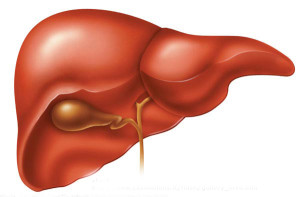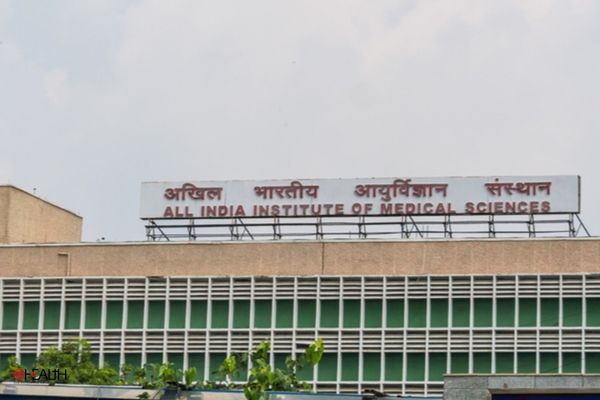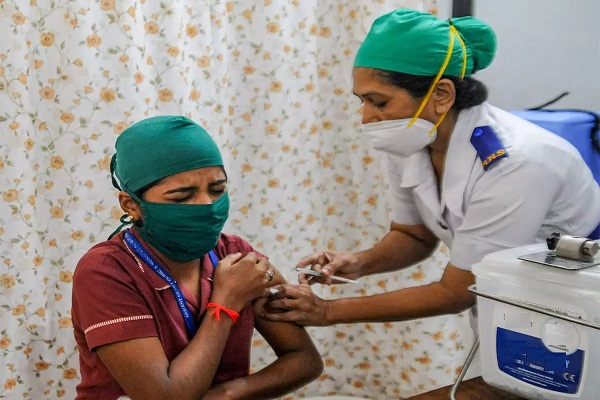
Dr. B.R. Das, President-Research & Innovation
Mentor-Molecular Pathology and Clinical Research Services, SRL R&D&Rashmi Khadapkar, Deputy General Manager, R&D Operations, SRL R&D

Liver fibrosis and cirrhosis have long been considered a prelude to certain death. Besides alcoholism, chronic viral hepatitis B and C infections are the most common causes of liver fibrosis. Presently it is estimated that about 20 million Indians are Hepatitis B carriers and around 8 to 10 million have HCV infection. At SRL close to one lakh patients are annually screened for hepatitis. Current trend indicates highest seropositivity for HEV (45%), followed by HBV (~ 19%); HEV and HCV seroprence has been comparatively low (below 10%). In chronic viral hepatitis cases, liver fibrosis rates are not predictable or linear therefore assessing the prence as well as progression of fibrosis is difficult. It is estimated that some 15% – 33% of HCV infected patients may exhibit mild or moderate liver fibrosis over the course of 40 or more years, whereas 20% to 33% have disease that progresses to severe cirrhosis or hepatocellular carcinoma (HCC) over 20 or more years. However some patients may have liver fibrosis that progresses to severe disease in as little as 3 or 4 years. Thus from clinical point of view two timelines need attention particularly when considering progression of viral hepatitis related liver disease. The first timeline begins when a patient becomes infected with either HCV or HBV, marking the onset of liver injury and a course of progression (in the absence of successful treatment) that varies from several years to as long as 50 years. The second timeline begins at the onset of cirrhosis. Successful management of fibrosis is possible through early screening and intervention.
Current diagnostic modalities:
Liver biopsy is considered as the “gold standard” for diagnosis, but in recent years there have been many studies that draw attention to the inadequacy of this diagnostic method. It is an invasive test, burdened with a risk of complications: pain occurs in approximately 20% of patients, serious complications like bleeding or hemophilia is present in 0.5% of cases. Deaths due to the consequences of these complications occur with a frequency 1:1000 – 1:10000 biopsies performed. In addition, histopathological examination provides a static uation; it must also be taken into account the so-called sampling error, resulting from the heterogeneity of the changes in the organ, as well as differences in opinion between the examiners. In order to achieve objectivity in histological assessment of progression/regression of fibrosis, European workers have evolved the METAVIR score, while other systems (Ishak, Scheurs) may also be used interchangeably. Each of these scales provides a numerical value to biological events and thereby helps studying changes over a particular time period. In view of the current limitations of the traditional gold standard, liver biopsy has therefore been supplemented with a number of new assessment modalities, called noninvasive tools (NITs) that has ushered in a new era of fibrosis assessment.
Non-invasive Tools (NITs) in detail:
Since last decade, the list of liver fibrosis non-invasive tools is increasing rapidly. These tests are not focused on exact staging of disease, but rather on dividing patients into categories of mild fibrosis (METAVIR stage 0 to 1) vs. significant fibrosis (METAVIR stage 2 or greater) and cirrhosis. They perform extremely well, as does biopsy, for excluding significant disease and for diagnosing cirrhosis with optimum accuracy. Emerging non-invasive tools can be grouped under two categories namely: Physical methods (based on imaging) and Biological methods (based on blood based biomarkers). Among various physical methods, classical ultrasound fairly demonstrates the advanced cirrhosis and is characterized by a high specificity but low sensitivity. However diversity of the earlier stages of fibrosis is impossible with classical ultrasound and therefore have led to the development of more specific and advanced imaging methods such as transient ultrasound elastography [FibroScan], acoustic radiation force impulse [ARFI] and magnetic resonance imaging [MRI]. Most of these high-end imaging technologies due to their limited availability are seldomly used for assessment of liver fibrosis. Two technologies namely: Fibroscan (Echosens, France) and ARFI (Seimens Acuson S2000) have been gaining importance recently. Diagnostic accuracy of both these technologies are comparable.

More than 2,000 studies in the last five years have employed blood based NIT to assess liver fibrosis, mostly studied in viral hepatitis patients. These markers either reflect liver function (indirect markers),or are related to matrix metabolism (direct markers). Few of the NITs either employ indirect markers or use combination of both direct and indirect markers. Some NITs such as the aspartate aminotransferase (AST) to platelet ratio index (APRI) are not patented, simple and easily available in clinical practice. Other NITs are patented, more complex and are based on multivariate regression analyses. Only few of these NITs including APRI, Fibrotest, FibroMeter and Hepascore have been so far uated by external and independent analysis.
FibroMeter Virus new tool augmenting Viral Hepatitis management:
FibroMeter Virus originated from a research led by Professor Paul CALES team in the Hepato-Gastroenterology Department at the Central University Hospital in Angers. The concept was further developed by Echosens, France with latest version FibroMeter Virus 3G (3rd generation), which is a combination of 2 complementary blood tests, one targeted for fibrosis and the other for cirrhosis thereby optimising assessment of liver-prognosis. Test combines results of seven biochemical parameters along with age and gender of the patient. It utilizes regression algorithm along with expert system to ignore the effect of discordant parameter and calculates: Fibrosis (FibroMeter) score, Cirrhosis (CirrhoMeter) score and Activity (InflaMeter) score. FibroMeter Virus has been extensively uated and compared with gold standard liver biopsy and select NITs such as APRI and Fibrotest. Compared to available blood based NITs, Fibrometer Virus has demonstrated 100% Negative Predictive Value and Positive Predictive Value (severe fibrosis and cirrhosis). A recent study published in July 2014 issue of Alimentary Pharmacology & Therapeutics highlights the benefit FibroMeter Virus for assessing liver-prognosis in chronic hepatitis C. The team found that FibroMeter, CirrhoMeter and sustained viral response were independent predictors of first liver-related events. CirrhoMeter was the only independent predictor of liver-related death.
Critical appreciation of NITs in clinical practice:
When uating NITs or considering their use in clinical practice, it is important to verify what particular question is being asked: is it to confirm or exclude cirrhosis, or to accurately stage fibrosis without a biopsy, or to confirm normality? These different end points will have different measures for positive and negative predictive values of the tests. For excluding cirrhosis all the available NITs have demonstrated acceptable performance, with Fibrometer Virus scoring highest in terms of its negative predictive value (excluding cirrhosis) and positive predictive value (confirming cirrhosis). Staging of liver fibrosis has important implications for disease prognosis and treatment decisions. Published studies highlight the need for improved accuracy of NITs particularly for intermediate liver fibrosis staging. Discordance between biopsy and NITs is quite understandable, mainly considering the difference in scoring systems employed, most of the NITs, follow continuous scores, whereas gold standard liver biopsy follow descriptive METAVIR/Ishak staging. The latter scoring systems are only descriptive categories (which are different amongst the various histological assessments) and do not have an arithmetical progression, e.g. stage 2 fibrosis (F2) is neither twice the severity of stage 1 (F1) nor half the severity of stage 4 (F4) in METAVIR. Data generated till date indicate FibroMeter Virus is the most accurate for fibrosis staging compared to available NITs.
With so many non-invasive modalities the approach to clinical management of liver fibrosis is likely to change in the near future. The best approach will be to use a combination of blood based and imaging NITs for the diagnosis of clinically significant fibrosis (CSF-index) or severe fibrosis (SF-index). Until substantial multicentric evidence is generated, it appears that the available NITs will have their own place in assessment and monitoring, as a complimentary / ancillary aid to liver biopsy.
Be a part of Elets Collaborative Initiatives. Join Us for Upcoming Events and explore business opportunities. Like us on Facebook , connect with us on LinkedIn and follow us on Twitter , Instagram.













